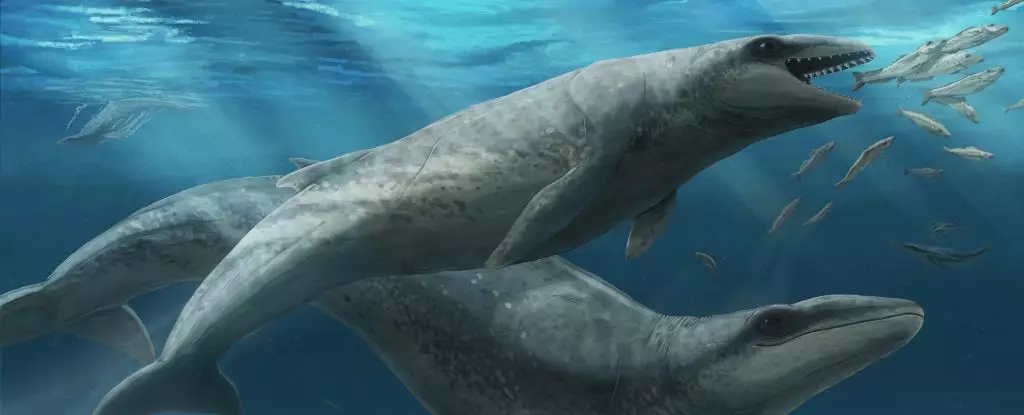The recent discovery of the Janjucetus dullardi fossil shatters our comfortable notions of whale evolution. Far from the majestic, enormous cetaceans we recognize today, this tiny predator challenges the romanticized image of ocean giants. For centuries, humans have been captivated by the sight of whales—symbols of grace, size, and power. Yet, this find forces us to confront a crucial truth: evolution is neither linear nor predictable. It is messy, unpredictable, and often dominated by fleeting, underappreciated creatures that flicker briefly in our planet’s deep history. J. dullardi’s diminutive size signals a more complex story—one in which evolution favors fluctuating niches, survival strategies, and forms that defy our expectations.
This fossil—an intimate glimpse into a creature roughly the size of a human—reminds us that giants are not the beginning, but sometimes the endgame of evolution. Prior to modern whales’ dominance, a variety of small, shark-like whales thrived in the ancient seas around Australia, carving out their own ecological niches. Their existence is a testament to natural history’s unpredictable twists, revealing how the ocean’s zoo of species was far more diverse than we typically picture today.
Questioning the Narrative of Progress: Size and Success in Evolution
Many tend to associate progress in evolution with increasing size and complexity. This perspective is deeply ingrained, but it oversimplifies the evolutionary treadmill. The discovery of J. dullardi—a creature barely three meters long, equipped with razor-sharp teeth and large eyes—pluralizes our understanding of what constitutes evolutionary success. These creatures were fierce, agile, and well-adapted to their ecological roles. Their compact bodies likely made them swift hunters, capable of navigating the turbulent, predator-rich waters of the past.
The shift from these smaller whales to the massive, baleen-filtering giants of today—some exceeding 30 meters—was not a linear march of progress but a complex process driven by fluctuating environmental pressures, available food sources, and competition. It prompts us to ask: why did the giants thrive, while many smaller species—such as J. dullardi—vanished? As intriguing as the fossil is, it also exposes the fragility of evolutionary success, a narrative too often simplified into “bigger equals better.” In reality, diversity, adaptability, and ecological fit are the real currencies of survival.
Implications for Modern Conservation and Humanity’s Role
The story of extinct whales like J. dullardi should serve as a sobering reminder of our ongoing impact. As climate change and human activities continue ruining marine ecosystems, we risk wiping out not only the iconic giants but also the small, obscure species that are vital for ecological resilience. Their disappearance could herald unpredictable shifts in oceanic health—much like the collapse of past ecosystems—resulting in a less stable and less diverse marine world.
Our fascination with megafauna often overshadows the importance of preserving lesser-known species that, despite their size or prominence, are integral to the ecological balance. These tiny whales, once abundant, highlight the transient nature of even seemingly successful species. As stewards of the planet, acknowledging this truth should inspire us to adopt more comprehensive conservation strategies—ones that recognize the intrinsic worth of every creature, regardless of size or notoriety.
What This Fossil Tells Us About Scientific Bias and Our Search for Origin
Lastly, the Janjucetus dullardi discovery challenges the biases ingrained in paleontology and evolutionary studies. For decades, the narrative has been dominated by the giants—whales, sharks, dinosaurs—shaping a perception that size is synonymous with importance. The nuance here is that what once was deemed insignificant or primitive holds critical clues to understanding the broader tapestry of life.
By emphasizing only the large and dramatic, we risk neglecting the myriad small species that fill in the gaps of evolutionary history. Each fossil, like J. dullardi’s partial skull and ear bones, provides an irreplaceable piece of the puzzle—detailing sensory adaptations, feeding behaviors, and developmental pathways. Recognizing these small, often overlooked species challenges us to refine our scientific lens, moving beyond spectacle toward a more inclusive understanding of life’s complex and often fragile history.
In embracing this perspective, we not only deepen our appreciation of our shared evolutionary heritage but also foster a more humble attitude toward nature’s resilience—and fragility. After all, in the shadows cast by these tiny whales, a profound truth emerges: size does not define survival, and the lessons of the past are invaluable guides for our future stewardship of the oceans.


Leave a Reply